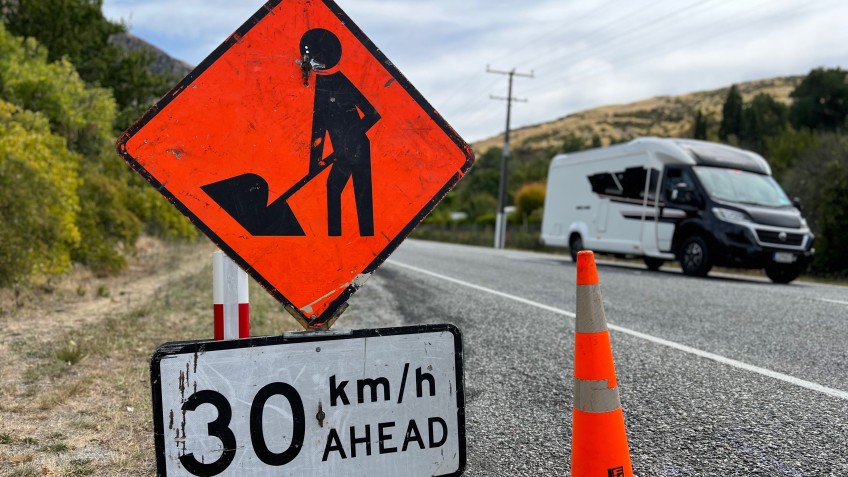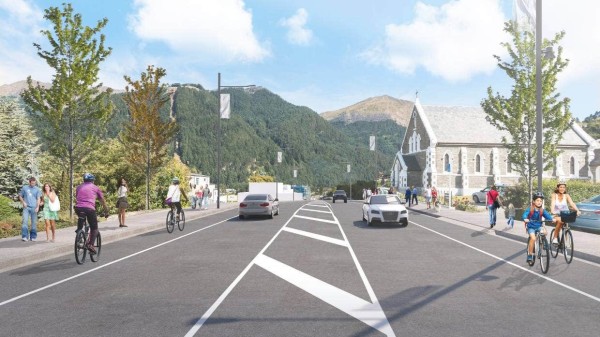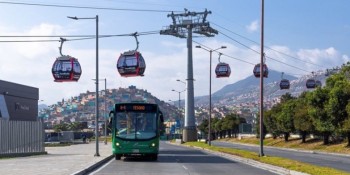Tourists being blamed for $2m of Queenstown's arterial road blowout

Tourists with their heads in the air looking at the mountains go part way to explaining a close to $2 million blowout on traffic management costs for Queenstown's arterial road project.
At least that's an explanation given to councillors by Edward Husband, the programme manager for Kā Huanui a Tāhuna, the alliance charged with delivering the town's increasingly drawn-out town detour project.
The overall budget for the first stage of the bypass has ballooned to more than $128 million, and in recent weeks councillors at the Queenstown Lakes District Council approved a further $17.65 million to get it built, of which $1.9 million was attributed to unexpected traffic management costs.

The ends result: The cost of an upgrade to less than one-kilometre of road in central Queenstown has ballooned to $128 million (Image: QLDC).
During an hour of discussions and questioning prior to the decision, councillor Matt Wong asked Mr Husband for an explanation of the context driving up traffic management costs.
"A lot of the additional costings in this budget are sort of hard infrastructure but, for me, and excuse me for not being an infrastructure expert here, traffic management is probably one that the public is going to look at and go, 'Why is there $2 million extra here?'.
"Is it such a hard thing to pin down?"
The response to that, Mr Husband says, is very specific to Queenstown.
"There are a lot of a lot of tourists walking around, and they walk around looking at the view, and they don't look at where they're going, (and they) certainly don't follow signs. So the challenge that we've had is people just walking wherever they feel like throughout the site.
"So that's why you see a lot of people with high-viz vests on directing the public on where to go."
More workers are needed at each intersection to manage pedestrian flows, and the longer the project draws out, the longer they need to be paid to stick around.
Mr Husband says what is required of contractors has also changed from very prescriptive "you must do this" rules to comply with a situation a "risk-based process".
"We get audited as to our performance on a regular basis and what we were finding was our audit scores were starting to drop based on the perceived risk by the auditor."
He says the answer, in a Queenstown context anyway, is to "increase the personnel presence", and he makes no apology for that.
"The last thing anyone wants is an unfortunate incident between a pedestrian and a worksite."
Vanessa Browne, the New Zealand Transport Agency's programme and standards national manager, says the shift from a prescriptive to a risk-based approach to traffic management was implemented last year.
The Code of Practice for Temporary Traffic Management, in place since 2009, was superseded by the New Zealand Guide to Temporary Traffic Management.
She says the new guide "allows those carrying out road works to consider what is required at each individual site – always with the goal of keeping people safe but then considering how to do that efficiently – thinking about the impacts on road users and the cost of temporary traffic management".
Ms Browne acknowledges "there may be some costs involved" in the short-term, but expects "in the long run costs in some areas will reduce as the sector applies innovation and fit for purpose application of temporary traffic management".
She says NZTA has been working with contractors, clients and councils on developing this "new way of thinking and working" since 2021, and each local authority can determine how and when they want to apply the new guide.
"NZTA is aiming to achieve roll out of the guide for state highway work as quickly as possible and is encouraging the wider sector to do the same."
Ultimately, the governing legislation for road worker safety is the Health and Safety at Work Act 2015, and a spokesperson for WorkSafe says this law has not changed since it came into effect.
Read more: Waka Kotahi-QLDC alliance buys $48,000 of road cones

























